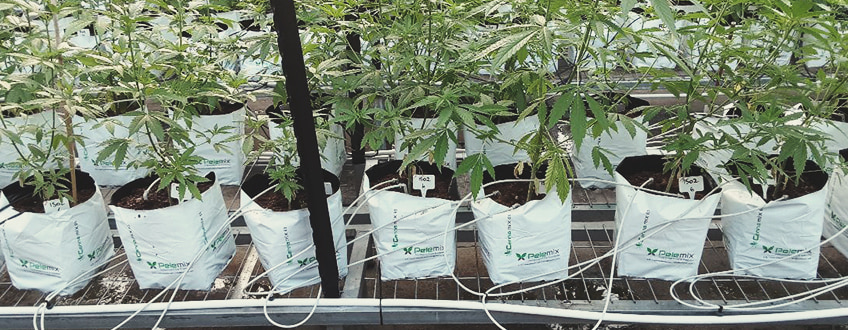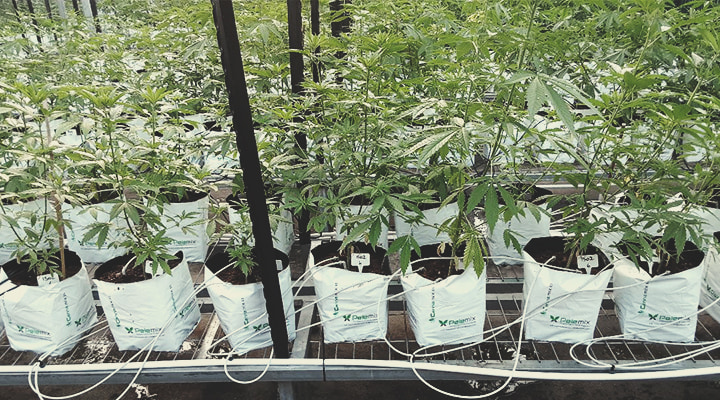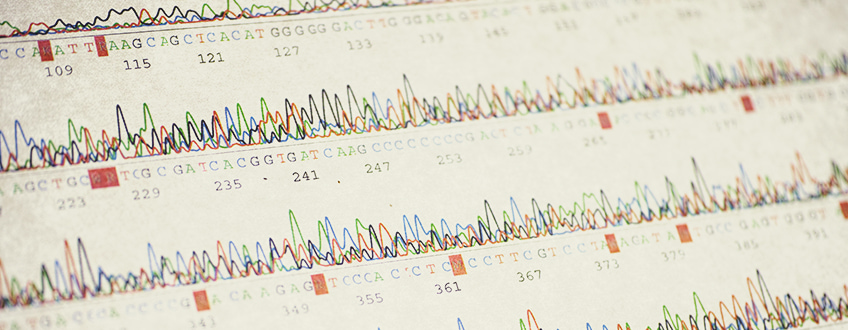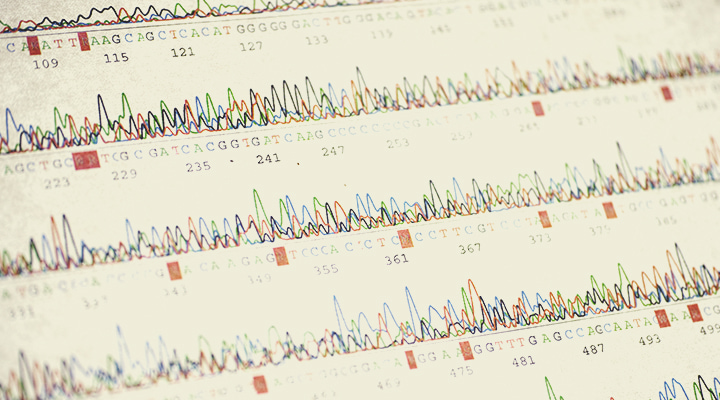.

How DNA Sequencing Is Changing Cannabis Breeding
The mapping of plant genetics has led to higher yields, disease resistance, and stress tolerance in agricultural crops. Now, researchers in Israel are applying this technology to cannabis. By mapping the genome of strains, this technology has the potential to revolutionise breeding and give rise to a new wave of improved cannabis varieties.
Contents:
Advances in cannabis genetic sequencing are making strain classification more accurate. Instead of relying on plant height, leaf shape, and the word of seed banks, growers of the near future may have access to a strain’s cannabis genetic fingerprint (CGF).
Hailed as a game-changer for the cannabis industry, this biometric marker for each variety will improve scientific research, secure breeders' rights, and assist both medical and recreational consumers. Continue reading to find out who developed this groundbreaking tech, and how it’ll shape the cannabis landscape going forward.
Israel: A Hub of Cannabis Innovation
Israel and cannabis have a special relationship. Researchers from the country’s universities first discovered THC, and went on to unveil key components of the endocannabinoid system. These days, Israeli research and development companies are exploring how proprietary terpene blends affect lung inflammation[1] and the potential of cannabinoid and medicinal mushroom combinations for certain health conditions.
Among this flurry of innovation, one of Israel’s pioneering cannabis companies has figured out a way to biometrically categorise cannabis strains. Researchers at Tikun Olam Cannbit, with support from the Plant Metabolism Laboratory at MIGAL Galilee Research Institute, recently completed the development of an in-house system that utilises this technology.
The company’s geneticist, Asaf Salmon, commented on the significance of this development, stating that “determination of the plant’s identity based on its typical DNA enables an independent, reliable and statistically valid identification, more so than any other biological parameter we have had so far”[2].
Right now, the company accepts leaf samples from interested parties within Israel looking to sequence their strains. Those from other nations are required to process DNA samples of their strains before sending them off for a CGF analysis.
But these are early days. Tikun Olam Cannbit hopes to scale up its system and offer the technology to labs and institutions across the world, enabling growers, breeders, and researchers the chance to acquire the CGF of their stock closer to home.


The Problem With Cannabis Strains
Accessing the CGF of a strain will help to clear up the murky waters of current systems of classification. Reports have shown that strain names don’t necessarily reflect the constituents within a given cultivar, leading to a false sense of diversity within the market[3]. Much of this confusion arises from the fact that strain names and effects are categorised away from scientific and taxonomic classification systems[4].
More scientifically valid means of categorising cannabis, such as chemovars and chemotypes, group varieties based on their key cannabinoids and terpenes. While this helps researchers and consumers seek out desired effects, it leaves much to be desired in regard to genomics—a field of study vital to the scientific understanding of cannabis, as well as commercial breeding efforts.
Sequencing the genetics of each “strain” will restore meaning and function to this key centerpiece of the cannabis lexicon. Rather than hoping that thousands of seeds labelled “Hindu Kush” actually belong to the lineage, produce thick-fingered leaves, and impart a stoning effect, breeders and growers will soon be able to acquire seeds with a CGF that promises these traits.
Having the genetic sequence of a strain for all to see will supersede word of mouth and marketing hype, opening up the doors to a more transparent and evidence-based market.
Cannabis Sequencing: A Boon for Breeders
For decades, qualitative data ruled the field of cannabis breeding. Although prohibition forced cultivators underground, they still managed to create timeless varieties that many smokers still wax nostalgically over today. The skilled horticulturalists behind these strains used their eyes to judge shape and yield, their taste buds to scrutinise terpene profiles, and their minds to weigh in on psychotropic effects. They kept the specimens with the most desirable traits, and bred them with others that fit the bill.
While this ancient form of creating hybrids works, it isn’t the most efficient. The modern, vast, and billion-dollar cannabis industry demands the accuracy and efficiency of a quantitative approach. While you’ll still come across the antiquated ideas of “indica” and “sativa” strains in many dispensaries, cannabis science has laid the groundwork for a quantitative revolution.
We’re about to enter the era of precise phytochemical profiles in commercial outlets, and genetic sequencing in the world of breeding.
Agricultural genomics paved the way for crop improvement in food cultivation. Sequencing the genetics of specific crops has allowed growers to select and develop elite cultivars boasting high yields, resistance to pests, and tolerance to environmental stress[5]. Prohibition created a latency period between the development of this technology and its application to cannabis, but that’s about to change.
Advances in cannabis genomics have already determined specific genes that code for enzymes that influence the phytochemical profile of a strain. For example, genes that code for the enzyme THCA synthase result in the conversion of CBGA—the “mother cannabinoid”—into THCA, the precursor to THC. Strains that contain these genes are more psychotropic than those that lack them.
But it goes much deeper than THC values. Breeders have had access to laboratory testing for years to determine the cannabinoid and terpene profiles of their crops. But genetic sequencing will allow them to determine many of the phytochemical outcomes of their plants as early as the seedling stage. Genome maps of each strain will also allow breeders to select for genetics that code for the creation of novel cannabinoids such as CBC.


Can CGF Data Improve Medical Cannabis Research?
Plenty of barriers obstruct the smooth sailing of medical cannabis research. As legalization continues to sweep across nations, scientists are calling for a clearer understanding of the herb and how it affects us, both positively and negatively. To achieve this, researchers need to work with samples that are actually available to consumers via dispensaries and other outlets.
To give some background, in the United States, cannabis scientists are restricted in the material they’re allowed to work with. The Drug Enforcement Agency (DEA) has long limited researchers to a single legal supplier; The University of Mississippi provides labs with ground, frozen, and powder-like cannabis—some of the poorest-quality herb around.
As the DEA continues to approve more cannabis-related research, scientists hope the quality and diversity of the material will improve[6]. As CGF technology enters laboratories across the country, it will enable researchers to study samples identical to those available to the public. We’re not just talking about similar terpene and cannabinoid profiles, but almost genetically identical material. This will, in turn, allow us to amass relevant data on the effects of different strains on different populations.
Big Changes Are on the Horizon
The CGF of a strain will open up other avenues of genetics-guided breeding, assisting in the selection and development of flower shape, pathogen resistance, and even nutrient uptake and harvestability. This technology will change the way we breed cannabis. Some voices in the industry are incredibly bullish and suggest that, within a matter of years, all of the strains we’re currently producing will disappear into irrelevance, to be replaced with unprecedented varieties born out of this new genetic selection process[7].
- New Research Suggests Terpenes And CBD Work 2X’s Better For Covid-19 Inflammation Than Corticosteroid https://www.forbes.com
- Israeli company develops system to identify, track cannabis strains - The Jerusalem Post https://www.jpost.com
- Cannabis Chemovar Nomenclature Misrepresents Chemical and Genetic Diversity; Survey of Variations in Chemical Profiles and Genetic Markers in Nevada Medical Cannabis Samples - PubMed https://pubmed.ncbi.nlm.nih.gov
- Cannabis: From Cultivar to Chemovar II—A Metabolomics Approach to Cannabis Classification https://www.liebertpub.com
- Genomics and our future food security - PubMed https://pubmed.ncbi.nlm.nih.gov
- DEA Moves Toward Approving More Research Marijuana Growers | The Scientist Magazine® https://www.the-scientist.com
- Inner Workings: Genomics blazes a trail to improved cannabis cultivation - PubMed https://pubmed.ncbi.nlm.nih.gov






































